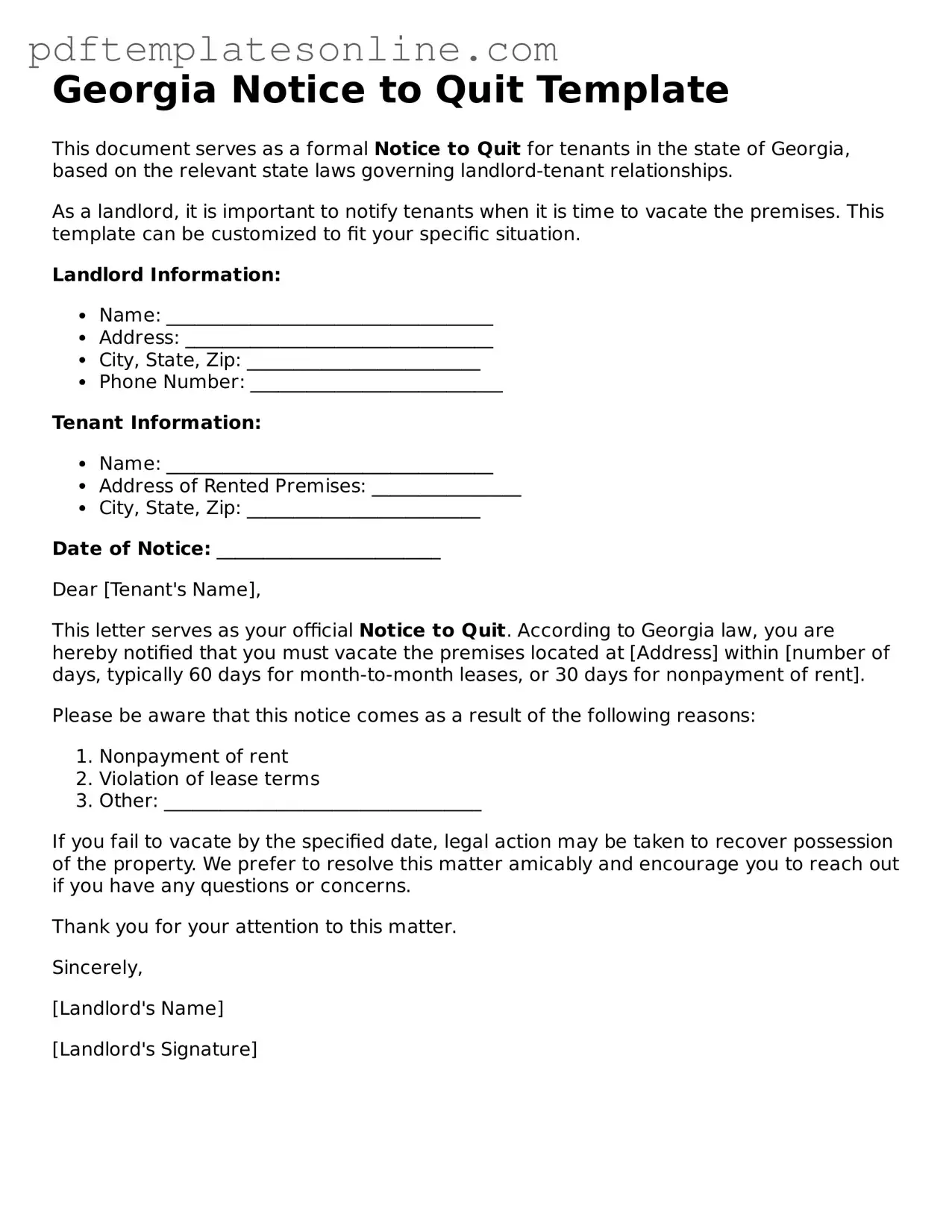Filling out the Georgia Notice to Quit form can be a straightforward process, but many people make common mistakes that can complicate matters. One frequent error is failing to provide the correct tenant information. It’s crucial to include the full name of the tenant as it appears on the lease. Omitting or misspelling this information can lead to delays or even dismissal of the notice.
Another common mistake is neglecting to specify the reason for the notice. In Georgia, landlords must provide a valid reason for terminating a lease. Whether it’s non-payment of rent or a lease violation, clearly stating the reason helps ensure the notice is legally sound.
Some individuals forget to include the date the notice is issued. This date is essential as it establishes the timeline for when the tenant must vacate the property. Without it, the notice may be considered incomplete.
Many people also overlook the importance of signing the form. A signature validates the document and signifies the landlord’s intent. A Notice to Quit without a signature may not hold up in court.
Inaccurate delivery of the notice is another pitfall. Georgia law requires that the notice be delivered in a specific manner, such as by personal delivery or certified mail. Failing to follow these guidelines can lead to complications in the eviction process.
Additionally, some landlords mistakenly believe that one notice suffices for multiple tenants. If there are multiple tenants listed on the lease, each tenant should receive their own Notice to Quit. This ensures that all parties are properly informed.
Another mistake involves not keeping a copy of the completed form. It is essential to retain a copy for your records. This documentation may be necessary if legal action becomes necessary later on.
People sometimes use outdated forms. Using the most current version of the Notice to Quit form is vital, as laws and requirements can change. Always check for the latest version to avoid any compliance issues.
Some landlords fail to give the tenant adequate time to respond. Georgia law stipulates specific time frames for tenants to vacate based on the reason for the notice. Ignoring these timelines can lead to legal complications.
Finally, misunderstanding the local laws can lead to mistakes. Each jurisdiction may have its own specific requirements regarding the Notice to Quit. Researching local regulations is critical to ensure compliance and avoid potential pitfalls.
